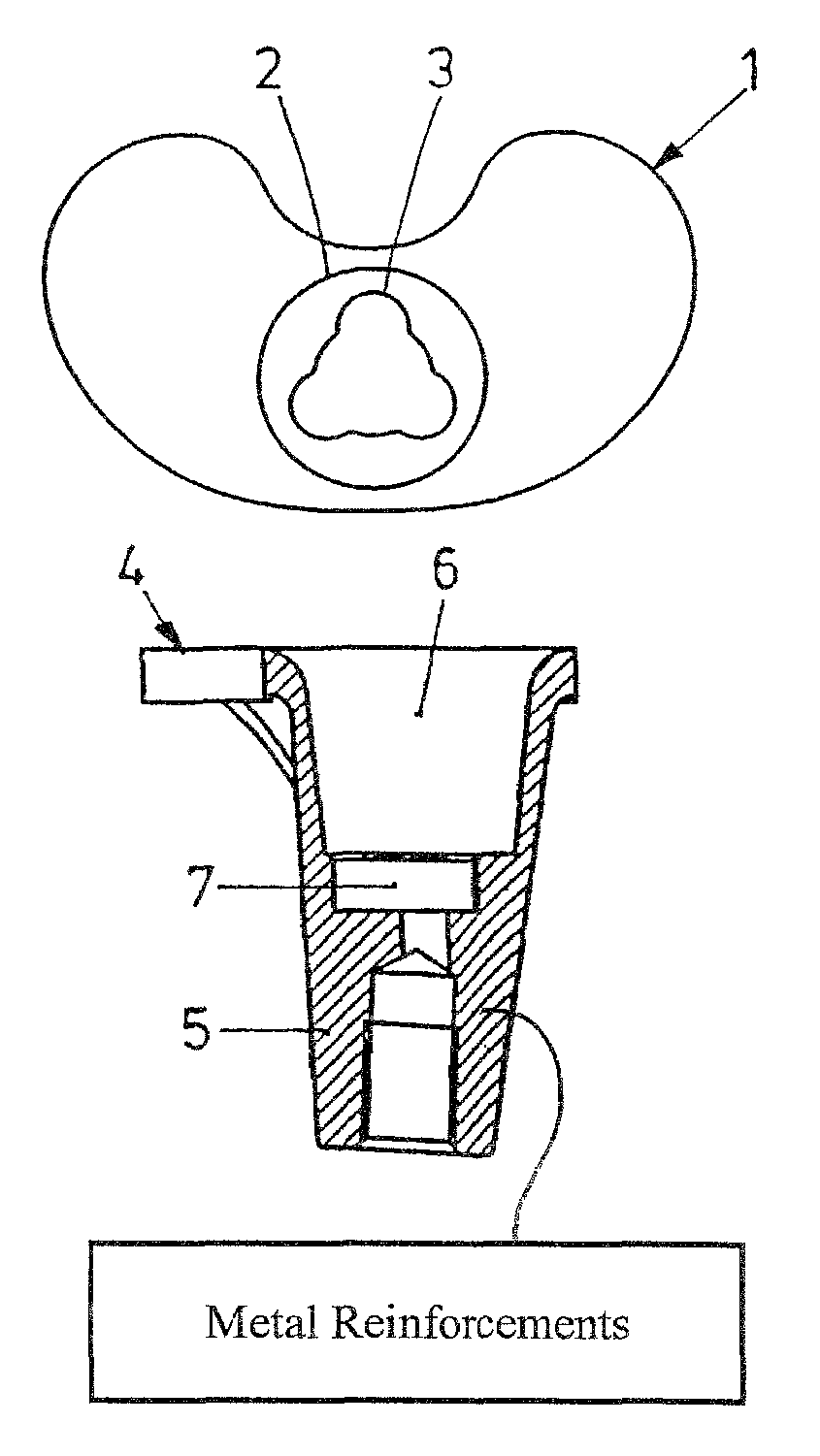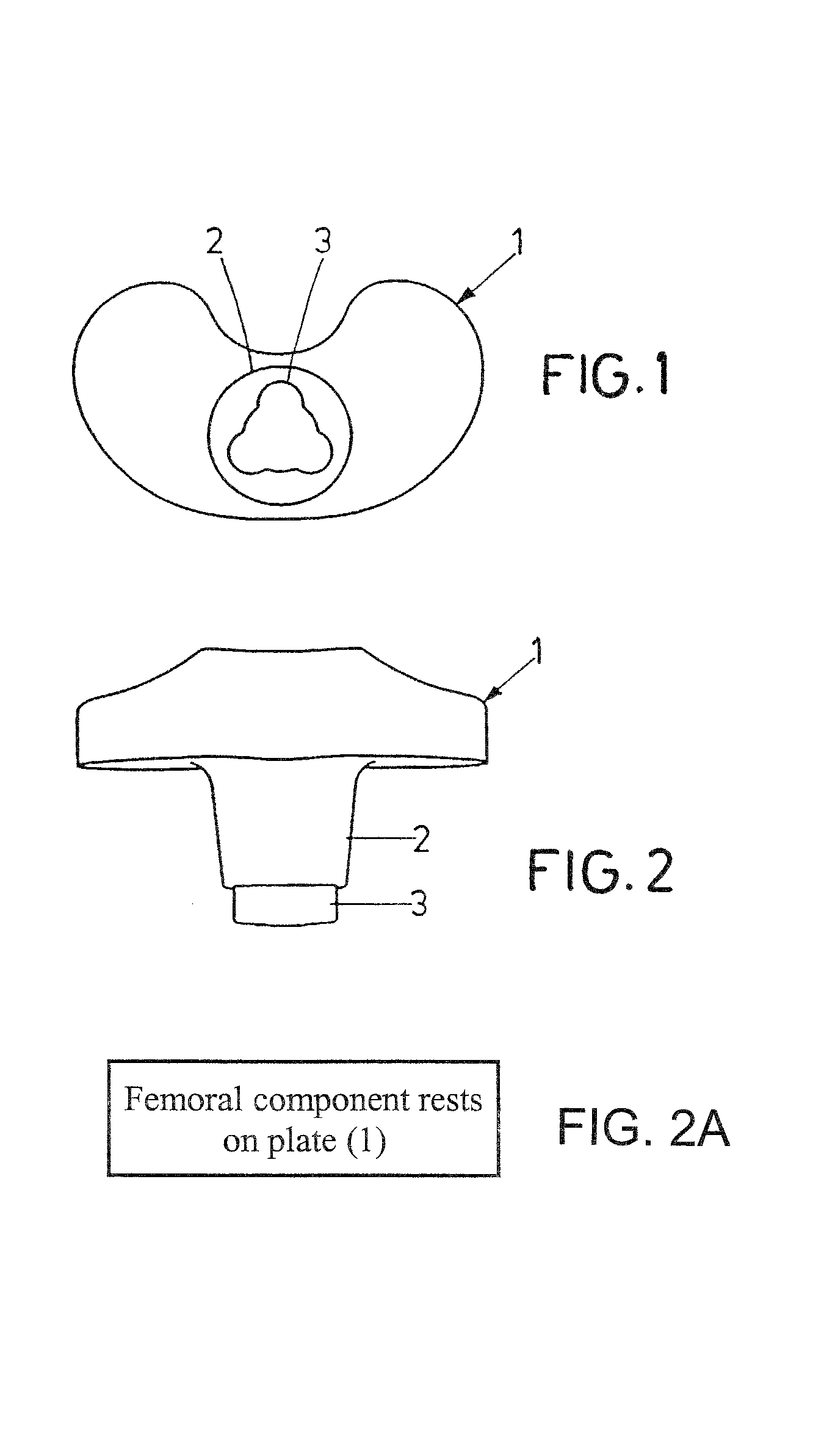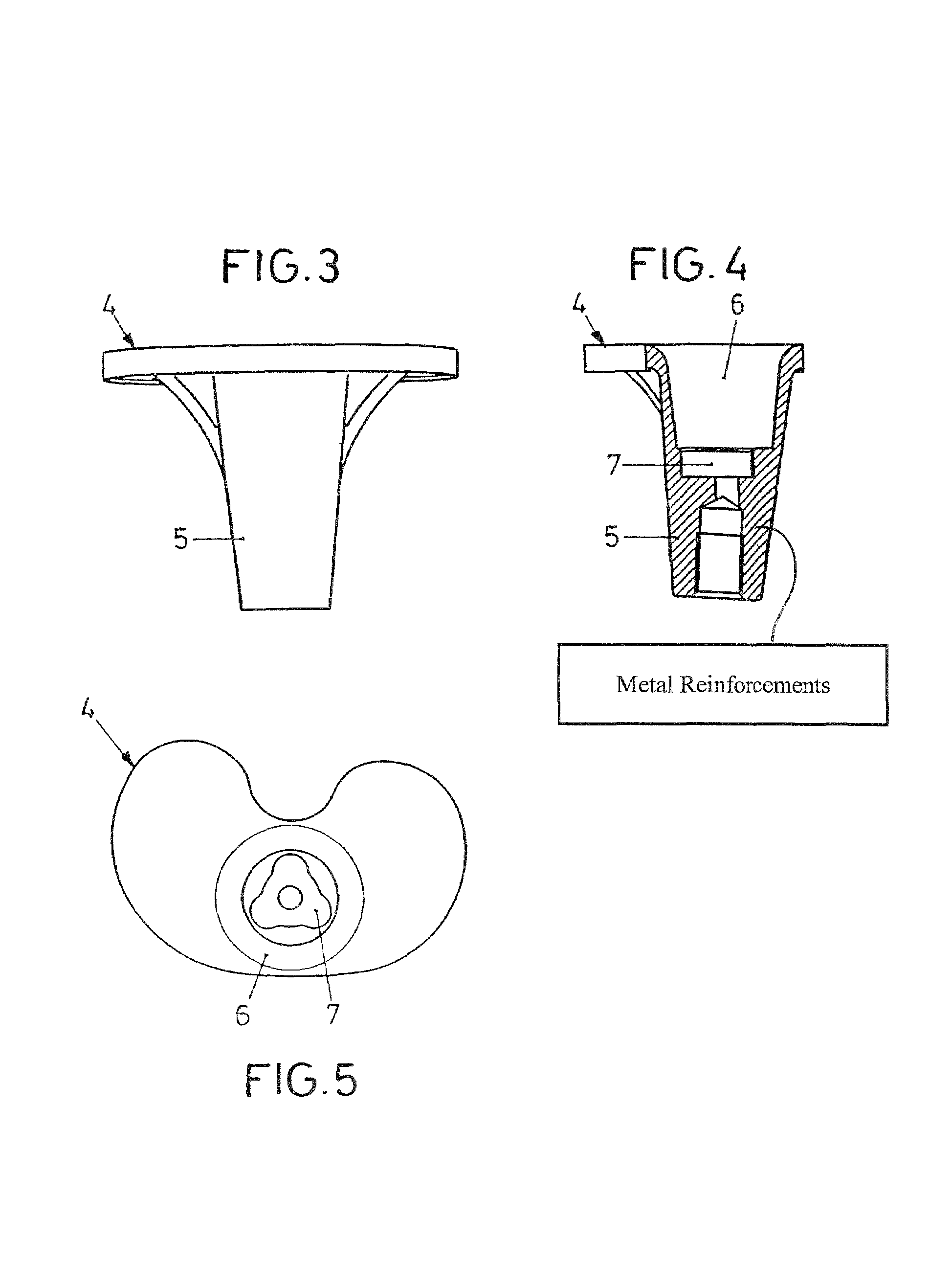Tibia component and sliding plate of a knee-joint endoprosthesis
a technology of tibia and endoprosthesis, which is applied in the field of tibia components, can solve the problems of premature implant loosening, high shearing force and torsional stress of fixed sliding components, and achieve the effect of reducing rotational force and number of tibial plateau components
- Summary
- Abstract
- Description
- Claims
- Application Information
AI Technical Summary
Benefits of technology
Problems solved by technology
Method used
Image
Examples
Embodiment Construction
[0028]A sliding plate 1 of polyethylene seen in FIGS. 1 and 2 has a reniform basic shape, with an attachment 2 extending downwards which has an end portion 3 of triangular basic shape with rounded corners as seen in FIG. 1.
[0029]The tray 4 seen in FIGS. 3 to 5 is equipped with an anchor portion 5 which extends downwards, having an recess 6 that mates the shape of the attachment 2 of the sliding plate 1.
[0030]The bottom side of the recess 6 is provided with a recess 7 of smaller diameter which has a triangular basic shape with rounded corners and an outer contour that corresponds to the outer contour of the end portion 3.
[0031]When the sliding plate 1 seen in FIGS. 1 and 2 is inserted by its attachment 2 first into the recess 6, the end portion 3 engages with the recess 7 by positive fit so that a non-rotatable connection is produced.
[0032]Correspondingly it is possible to apply sliding plates 1 of varying degrees of mobility, using one and the same tibial plateau component 4.
PUM
| Property | Measurement | Unit |
|---|---|---|
| molecular weight | aaaaa | aaaaa |
| shape | aaaaa | aaaaa |
| degrees of freedom | aaaaa | aaaaa |
Abstract
Description
Claims
Application Information
 Login to View More
Login to View More - R&D
- Intellectual Property
- Life Sciences
- Materials
- Tech Scout
- Unparalleled Data Quality
- Higher Quality Content
- 60% Fewer Hallucinations
Browse by: Latest US Patents, China's latest patents, Technical Efficacy Thesaurus, Application Domain, Technology Topic, Popular Technical Reports.
© 2025 PatSnap. All rights reserved.Legal|Privacy policy|Modern Slavery Act Transparency Statement|Sitemap|About US| Contact US: help@patsnap.com



